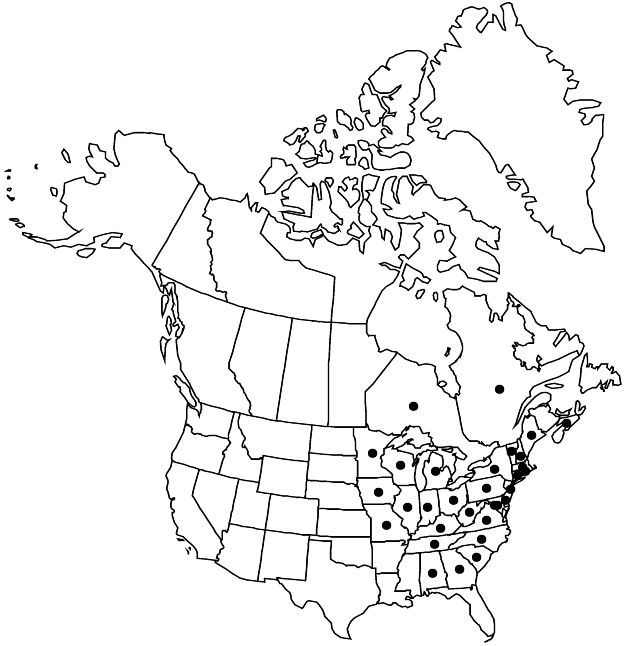Difference between revisions of "Crocanthemum canadense"
in N. L. Britton and A. Brown, Ill. Fl. N. U.S. ed. 2, 2: 540. 1913.
FNA>Volume Importer |
imported>Volume Importer |
||
| Line 69: | Line 69: | ||
|publication year=1913 | |publication year=1913 | ||
|special status=Endemic | |special status=Endemic | ||
| − | |source xml=https:// | + | |source xml=https://bibilujan@bitbucket.org/aafc-mbb/fna-data-curation.git/src/bb6b7e3a7de7d3b7888a1ad48c7fd8f5c722d8d6/coarse_grained_fna_xml/V6/V6_761.xml |
|genus=Crocanthemum | |genus=Crocanthemum | ||
|species=Crocanthemum canadense | |species=Crocanthemum canadense | ||
Revision as of 23:43, 27 May 2020
Herbs. Stems ascending to erect, usually red-tinged, 15–50(–65) cm, stellate-pubescent to glabrate. Leaves cauline; petiole 1–3 mm; blade oblanceolate-elliptic to narrowly elliptic, tapered to base, 12–30(–38) × 4–7(–10) mm, apex acute, surfaces stellate-tomentose and with scattered simple hairs abaxially, ± lustrous, sparsely stellate-pubescent and with simple hairs adaxially, lateral veins raised abaxially. Inflorescences terminal or subterminal, cymes; chasmogamous flowers 1–3 per cyme, cleistogamous 1–3 per glomerule, on lateral leafy branches 6–18 cm, flowering 1–3 months later than chasmogamous. Pedicels (1.5–)4–10(–17) mm, with stellate and simple hairs; bracts absent. Chasmogamous flowers: outer sepals narrowly lanceolate, 2–6 × 0.5–1 mm, inner sepals 5–9 × 3.5–5 mm, apex acute; petals obovate, 8–15 × 6–14 mm; capsules 5–8 × 4–7 mm, glabrous. Cleistogamous flowers: outer sepals rudimentary, 0.2–0.5 × 0.2–0.4 mm, inner sepals obovate, 2.5–4 × 2.5–3.5 mm, apex acute; capsules 2.3–3.5 × 2.5–3.5 mm, glabrous. 2n = 20.
Phenology: Flowering late Mar–Jul(–Aug).
Habitat: Sandy or rocky barrens, glades, sandhills, prairies, fields, roadsides, maritime grasslands and heathlands, interdunes, pine-oak woodlands, oak-hickory woodlands, rocky slopes
Elevation: 0–700 m
Distribution

N.S., Ont., Que., Ala., Conn., Del., D.C., Ga., Ill., Ind., Iowa, Ky., Maine, Md., Mass., Mich., Minn., Mo., N.H., N.J., N.Y., N.C., Ohio, Pa., R.I., S.C., Tenn., Vt., Va., W.Va., Wis.
Discussion
Crocanthemum canadense and C. dumosum are distinguished from sympatric species by simple hairs among the stellate ones on leaf surfaces and by reddish colored stems. Until the twentieth century, C. canadense was treated much more broadly, to include C. bicknellii, C. dumosum, and C. propinquum; it differs from C. bicknellii and C. propinquum by having simple hairs on foliage (versus stellate only) and larger cleistogamous capsules. Its closest relative is 7. C. dumosum; see that treatment for identification aids.
Selected References
None.